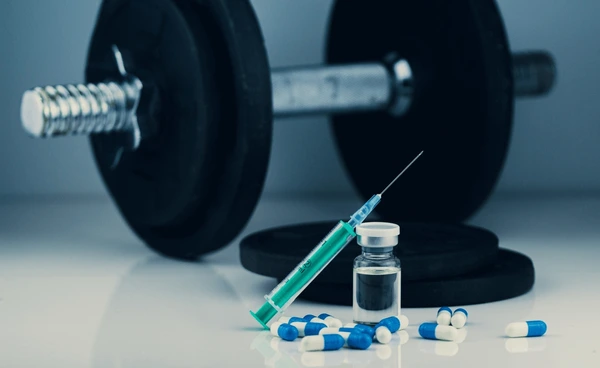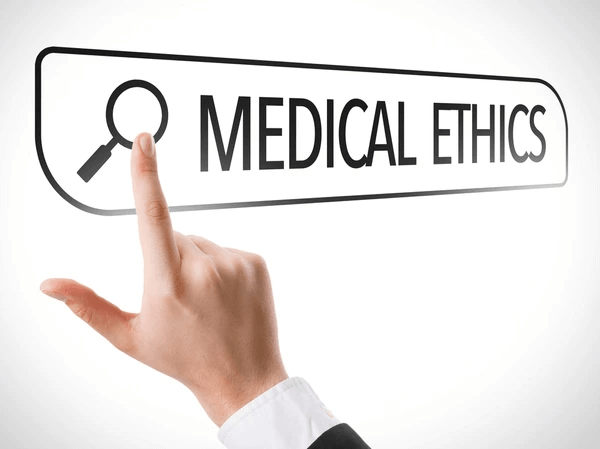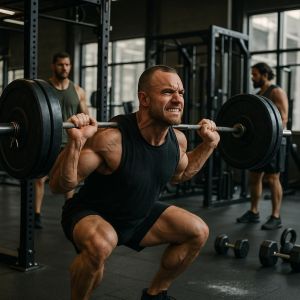How They Can Help and What to Think About?
Steroids have long held a prominent role in medical treatments, offering relief and promoting recovery for various health conditions. While often associated with bodybuilding and athletic enhancement, steroids serve a critical function in the realm of injury recovery.
Essentially, the application of steroids for injury recovery represents one of their most impactful uses-not just for athletes but for anyone suffering from significant injuries. This article delves into how steroids can facilitate healing and the essential points you need to consider before choosing them as a treatment option.
Understanding both the benefits and risks associated with steroid use is crucial for making informed decisions. Steroids can effectively reduce inflammation, alleviate pain, and speed up the healing process-benefits that might seem highly attractive when faced with prolonged recovery times or chronic pain. However, it is equally important to be aware of potential side effects, such as hormonal imbalances or organ damage, which make consulting healthcare professionals imperative.
In today’s discussion, we’ll explore various aspects of steroids’ role in injury recovery. By examining what steroids are, how they work at a cellular level, and their common medical uses, we aim to provide a comprehensive overview that will help you understand this complex issue better. Whether you’re considering steroids for personal use after an injury or simply looking to broaden your knowledge on the topic, this guide aims to balance information with insight.
What Are Steroids?

Steroids are organic compounds that play a crucial role in various bodily functions. There are two main types of steroids: anabolic steroids and corticosteroids. Anabolic steroids primarily focus on building muscle tissue and enhancing physical performance by mimicking the effects of naturally occurring testosterone.
On the other hand, corticosteroids are more involved in the regulation of inflammation, immunity, and stress responses in the body. While anabolic steroids are often associated with athletic enhancement, corticosteroids have significant medical applications, particularly for reducing inflammation related to injuries.
How Steroids Work at a Cellular Level

At the cellular level, steroids operate by penetrating cell membranes and binding to specific intracellular receptors. Once bound, these steroid-receptor complexes travel into the cell nucleus where they influence DNA transcription processes.
This activation or suppression of certain genes can result in increased protein synthesis for muscle growth (in the case of anabolic steroids) or reduced production of inflammatory molecules (when using corticosteroids). The ability to modulate gene expression so precisely is what makes steroids such powerful agents in both promoting muscle hypertrophy and reducing inflammation respectively.
Common Medical Uses for Steroids

Steroids have a wide array of medical uses beyond sports-related scenarios. Corticosteroids like prednisone or dexamethasone are commonly prescribed to treat conditions involving chronic inflammation such as asthma, rheumatoid arthritis, and lupus. They are also used to manage acute inflammatory reactions from injuries or surgical procedures where rapid recovery is essential.
Anabolic steroids may be used medically under strict supervision for conditions that lead to muscle wasting like HIV/AIDS or severe burns. Despite their potential benefits, all forms of steroids must be administered carefully due to possible side effects and health risks that necessitate medical supervision.
Given their versatile applications within medicine, both anabolic and corticosteroids play indispensable roles in injury recovery scenarios by leveraging their unique mechanisms at a cellular level to promote healing efficiently. However, it remains essential for individuals considering these treatments-especially through methods like using “steroids for injury recovery”-to weigh both benefits and risks carefully under professional guidance.
How Steroids Can Aid in Injury Recovery
Mechanisms of Action
Steroids can significantly aid in injury recovery through several mechanisms. One of the most crucial functions is their ability to reduce inflammation, which is a typical response to acute injuries like sprains and strains. By decreasing inflammation, steroids create an environment conducive to healing tissue.
They inhibit the production of pro-inflammatory chemicals and proteins such as prostaglandins and cytokines, which help to lessen swelling and pain almost immediately. This effect not only makes patients more comfortable but also allows for faster progression through rehabilitation protocols.
Promoting Cellular Repair
Another way steroids facilitate injury recovery is by encouraging cellular repair processes. Steroids interact with cell receptors to enhance protein synthesis, speed up tissue regeneration, and improve cellular turnover rates.
For athletes or individuals recovering from significant muscle injuries, this accelerated repair process can mean getting back on their feet and back to their routines much sooner than if they were relying solely on conventional treatments. Additionally, corticosteroids can strengthen connective tissues by promoting collagen deposition, helping joints regain stability quicker after ligament or tendon injuries.
Research-Backed Effectiveness

Numerous studies support the use of steroids for effective injury recovery. Research has shown that corticosteroids can be particularly beneficial for conditions such as tendinitis, bursitis, and even post-operative recovery scenarios like rotator cuff surgery.
One specific study found that patients receiving steroid injections for Achilles tendinosis reported a significant reduction in pain and improved function compared to those who did not receive steroid treatment. It’s important to note that while steroids present considerable benefits when used correctly under medical supervision, understanding the precise type and dosage appropriate for each injury type ensures optimal outcomes without undue risk.
It’s essential always to weigh the advantages against potential side effects when considering steroids for injury recovery. However, when used judiciously and under professional guidance, they can play an instrumental role in speeding up both inflammation reduction and tissue repair processes.
The Benefits of Using Steroids for Recovery

When dealing with severe injuries, the necessity for an accelerated healing process becomes evident, and here is where steroids for injury recovery emerge as a powerful tool. Steroids can significantly speed up the body’s natural healing mechanisms. By reducing inflammation rapidly, steroids contribute to shrinking the swelling around injured tissues, which facilitates quicker recovery. This expedited healing is particularly beneficial for athletes who often face time constraints in getting back to their peak performance levels.
In addition to speeding up recovery times, steroids play a crucial role in pain reduction and improving mobility for patients suffering from various injuries. Pain often inhibits movement, negatively impacting daily activities and rehabilitation exercises. Steroids alleviate pain by minimizing inflammation and interrupting nerve signals responsible for transmitting pain sensations. Consequently, individuals report an enhancement in their range of motion and ease of performing physical activities. For example:
- Patients with arthritis or tendonitis experience substantial relief when treated with corticosteroids.
- Post-operative patients tend to recover faster due to the anti-inflammatory effects of steroid administration.
Another remarkable benefit is the prevention of chronic injury complications that might otherwise arise from untreated or poorly managed injuries. Chronic conditions such as recurring joint pain or prolonged muscle weakness are common worries among those who have experienced significant injuries. By using steroids under appropriate medical supervision, these long-term issues can be mitigated effectively. Testimonials abound from people across various fields:
- Athletes who successfully return to their sport post-injury.
- Workers resuming their jobs sooner than anticipated.
- Elderly patients enjoy enhanced quality of life without persistent pain.
Overall, while acknowledging the potential risks associated with steroid use, it’s essential not to overlook their profound benefits in ensuring rapid and effective injury recovery when used prudently under professional guidance.
Potential Risks and Side Effects

The usage of steroids for injury recovery is not without its potential hazards. One significant risk is the differentiation between short-term and long-term side effects. Short-term side effects may include elevated blood pressure, mood swings, and insomnia.
Users might also experience increased appetite, fluid retention, and rapid weight gain. Over an extended period, however, the risks grow more severe and can lead to dire health complications such as osteoporosis, stunted growth in adolescents, and a weakened immune system which leaves one vulnerable to infections.
Another crucial concern is the potential for addiction and abuse. The performance-enhancing qualities of certain anabolic steroids make them particularly susceptible to misuse beyond medical recommendations. Athletes and bodybuilders seeking to leverage their benefits may follow dosages that far exceed safe limits, leading to dependency. This addiction not only poses serious physical health risks but also has profound psychological consequences like aggression (often termed “roid rage”), depression upon withdrawal, and mental health disorders related to distorted self-image.
Steroid usage impacts key organs within our bodies. The liver is at high risk-it must process these potent compounds which can precipitate liver damage or diseases such as hepatitis or cirrhosis when used improperly over long periods.
Cardiovascular issues are also noteworthy: prolonged use of steroids for injury recovery can induce high cholesterol levels, increase the likelihood of heart attacks or strokes by accelerating atherosclerosis (the buildup of fats in arteries), and cause heart enlargement or pump dysfunctions. Lastly, there are myriad psychological side effects including anxiety, paranoia, hallucinations, and mood disturbances that could complicate one’s emotional well-being alongside their physical injuries.
These interconnected layers of risk highlight why medical supervision is essential when using steroids for injury recovery. The proper regulation by healthcare professionals ensures that dosages remain within safe boundaries while monitoring organ functions mitigates a significant portion of adverse outcomes associated with self-administration or ill-informed use.
Proper Usage and Dosage

When considering the use of steroids for injury recovery, it’s paramount to adhere to proper usage and dosage guidelines under medical supervision. The efficacy of steroids is tightly linked to how they are administered, making medical oversight essential to prevent misuse and mitigate potential side effects. Specific dosages can vary widely depending on the nature and severity of the injury, as well as the type of steroid being used.
One critical aspect is determining the appropriate steroid form vs injectable. Oral steroids are generally easier to administer but come with a higher risk of systemic side effects due to their passage through the digestive system and liver.
In contrast, injectable steroids tend to act more quickly and target specific areas more effectively but require more precise administration techniques often carried out in a clinical setting. Both options have their pros and cons, which need careful consideration by healthcare professionals who tailor treatment plans according to individual patient needs.
Another crucial factor involves the recommended duration for steroid usage. Short-term use is preferred for acute injuries to minimize exposure and potential long-term complications. Extended use increases risks such as hormonal imbalance, organ damage, or psychological issues like dependency. Medical guidelines usually prescribe tapering off steroids gradually rather than abrupt cessation to allow the body’s hormonal systems time to adjust.
FormProsCons
Oral Steroids Easy administration Higher systemic side effects
Injectable Steroids Targeted action Requires precise administration techniques
In light of these considerations, ensuring that you use steroids safely necessitates strict adherence to prescribed dosages and schedules. Self-medicating or altering dosages without consulting healthcare providers can lead to severe adverse effects or reduced efficacy in treating injuries. Responsible use under professional guidance not only enhances recovery but also minimizes risks associated with steroid therapy.
Legal and Ethical Considerations

Understanding the legal and ethical landscape surrounding the use of steroids for injury recovery in Canada is crucial, particularly given the substance’s controversial reputation. Laws governing anabolic and corticosteroid use vary across provinces, with some jurisdictions classifying them as controlled substances.
In many places, anabolic steroids are classified as Schedule IV substances under the Controlled Drugs and Substances Act (CDSA), making their unauthorized possession or distribution illegal in Canada. Conversely, corticosteroids can be prescribed by a healthcare provider for legitimate medical use, but still require approval to ensure safe and legal usage.
Professional Sports

In professional sports and athletics in Canada, the ethical implications of steroid use become even more pronounced. Many sporting organizations have strict policies banning performance-enhancing drugs (PEDs), including specific types of steroids due to their potential to provide an unfair competitive advantage. Athletes found violating these rules can face severe consequences, such as suspensions, fines, or permanent bans from the sport.
Responsible Approach
Ensuring safe and legal steroid usage in Canada is not solely about adhering to laws; it also involves making informed choices under medical supervision. Healthcare providers can offer personalized advice on suitable treatment plans while minimizing risks associated with improper usage. Open communication with a physician ensures that any course of treatment, whether involving oral or injectable forms of steroids, is both legally compliant and aligned with best practices in medical care.
This responsible approach helps balance the benefits of accelerated healing and improved mobility against potential risks, safeguarding overall well-being while navigating complex legal landscapes in Canada.
Alternatives to Steroids for Injury Recovery

When it comes to managing injuries, many individuals and medical professionals look for alternatives to steroids for injury recovery. One such alternative is natural anti-inflammatory treatments, which include dietary interventions and supplements known to reduce inflammation. Foods rich in omega-3 fatty acids, like fish oil, have been shown to lower inflammation levels substantially.
Additionally, consuming fruits and vegetables high in antioxidants can mitigate oxidative stress contributing to chronic inflammation. Supplements such as turmeric and curcumin also offer natural anti-inflammatory properties without the side effects associated with steroid use.
Another non-pharmacological approach is physical therapy, which plays a crucial role in the rehabilitation of injuries. Physical therapists develop personalized exercise regimens that aim to restore strength, improve flexibility, and enhance mobility without relying on medications. Techniques such as ultrasound therapy, electrical stimulation, and manual therapy can accelerate the healing process by improving blood flow to injured areas and reducing pain levels naturally.
Comparing the effectiveness and risks of these alternatives to steroids reveals some compelling insights. While steroids can offer quick relief from pain and inflammation, their long-term use raises significant health concerns including organ damage and psychological impacts.
Conversely, alternatives like diet modification or physical therapy may require more time to showcase their benefits but come with substantially fewer risks of adverse effects. Balancing immediate relief against long-term health outcomes is essential when deciding between using steroids for injury recovery or opting for safer alternatives.
Alternative TreatmentBenefitsRisks
Natural Anti-inflammatory Diet Reduces inflammation naturally; supports overall health Might take longer to show results
Physical Therapy Improves mobility; targets root cause of injury Requires consistency and time commitment
Supplements (e.g. Turmeric) Naturally reduce inflammation and are easy to integrate into daily routine Poor regulation in the supplement industry could affect purity/effectiveness
Another critical aspect to consider when looking into the use of steroids for injury recovery is the legal and ethical landscape surrounding their application. In many countries, both anabolic and corticosteroids are regulated substances that necessitate a prescription for legal usage.
The reason behind these strict regulations lies not only in the potential for abuse but also in the myriad of health complications that can arise from unsupervised or inappropriate use. Athletes, for example, must navigate complex rules set by sports organizations regarding steroid use, as performance enhancement is a significant ethical concern.
Legal status varies significantly across different regions. In the United States, the Anabolic Steroid Control Act categorizes anabolic steroids as controlled substances, making unauthorized possession and distribution illegal. Conversely, some European countries have less stringent laws but still impose rigorous restrictions on how these substances can be obtained and used.
It’s essential to be aware of your local regulations to ensure compliance and avoid legal repercussions. For those seeking medical benefits without crossing into illegal territory, corticosteroids are more commonly prescribed under medical supervision due to their therapeutic applications in reducing inflammation and pain.
Ethical considerations extend beyond legality, especially in competitive environments where fairness in sport comes under scrutiny. The World Anti-Doping Agency (WADA) has strict guidelines prohibiting the use of anabolic steroids in professional sports due to their ability to enhance performance artificially.
This stance aims to maintain a level playing field while protecting athletes’ long-term health. That said, even non-athletes need to abide by an ethical framework when using steroids for injury recovery; transparency with healthcare providers ensures responsible use aligning with medical best practices.
Ensuring you’re using steroids safely involves several layers of responsibility: adhering to prescribed dosages, not seeking drugs from illicit sources, and understanding both immediate impacts and long-term consequences on your health. Collaborating closely with healthcare professionals provides the dual benefit of achieving optimal injury recovery outcomes while minimizing risks associated with improper use.
References and Further Reading
The use of steroids for injury recovery presents a complex yet potentially beneficial option for patients and athletes alike. Throughout this article, we have explored how steroids can significantly reduce inflammation, alleviate pain, and accelerate the healing process. Various case studies and research findings underscore their effectiveness in treating different injuries. However, it is crucial to consider these benefits alongside the potential risks associated with steroid use.
Understanding both the short-term and long-term side effects is paramount. Steroids can pose significant risks to organs like the liver and heart and may lead to psychological issues if misused or taken without proper medical guidance. The importance of medical supervision cannot be overstressed; appropriate dosage, administration method (oral vs injectable), and duration should always be prescribed by healthcare professionals to mitigate risks.
As we navigate the pros and cons of steroids for injury recovery, it’s essential to remember that legal and ethical considerations play a vital role. Adhering to local laws on steroid use is imperative, especially within professional sports settings where rules are stringent.
Moreover, exploring alternatives such as natural anti-inflammatory treatments or physical therapy can offer additional avenues for effective recovery without some of the inherent risks steroids carry. Always consult with healthcare providers before making any decisions regarding treatment options to ensure safe and effective injury management.









